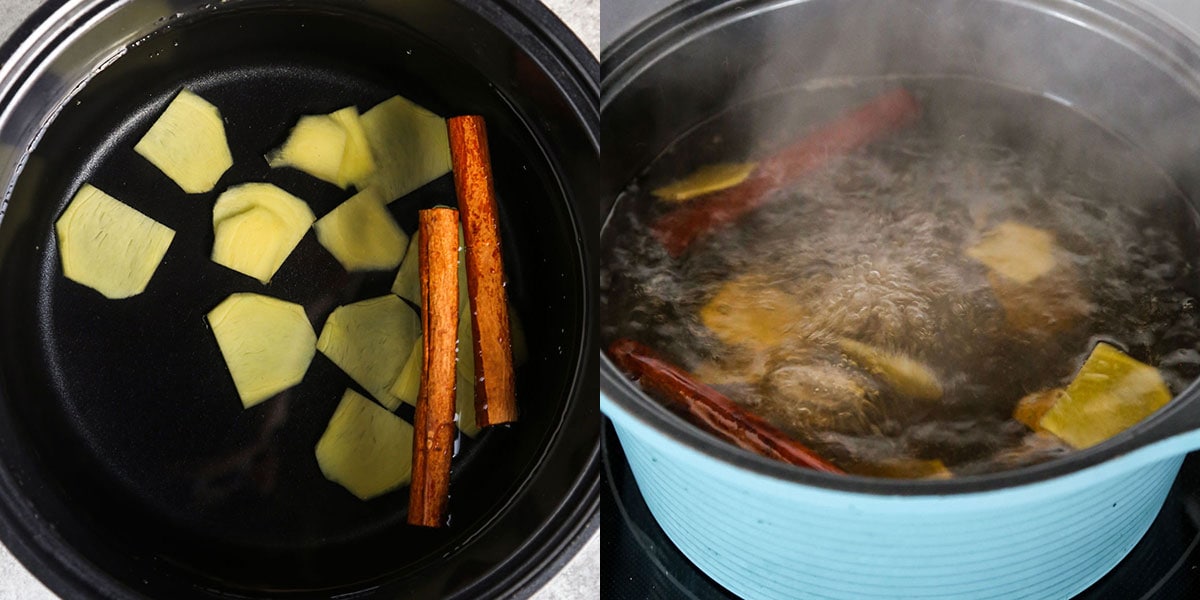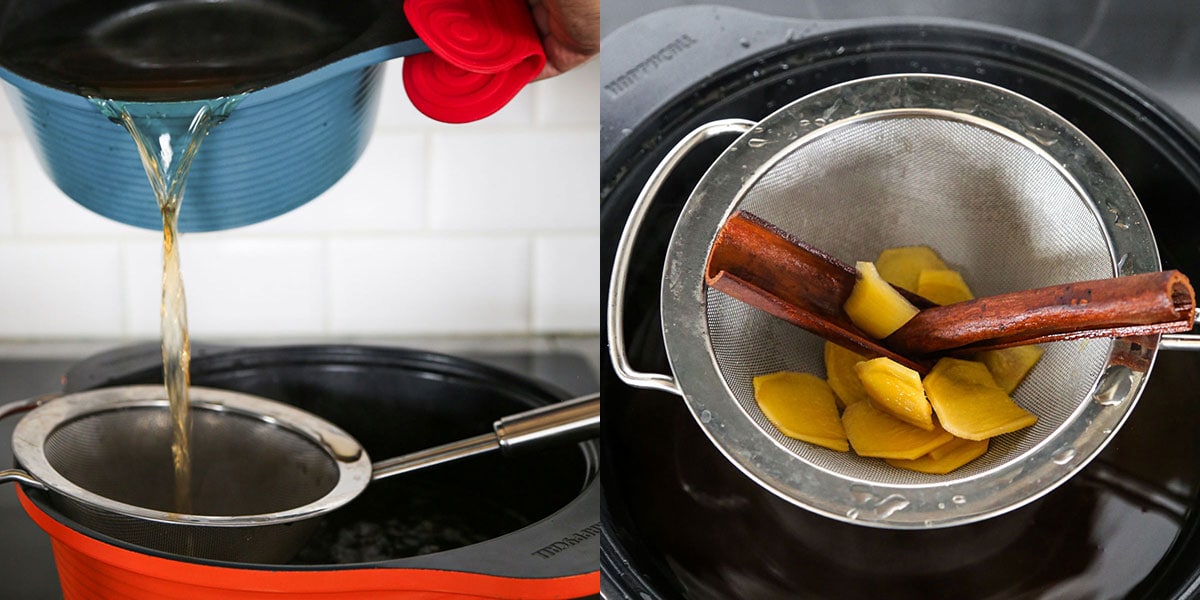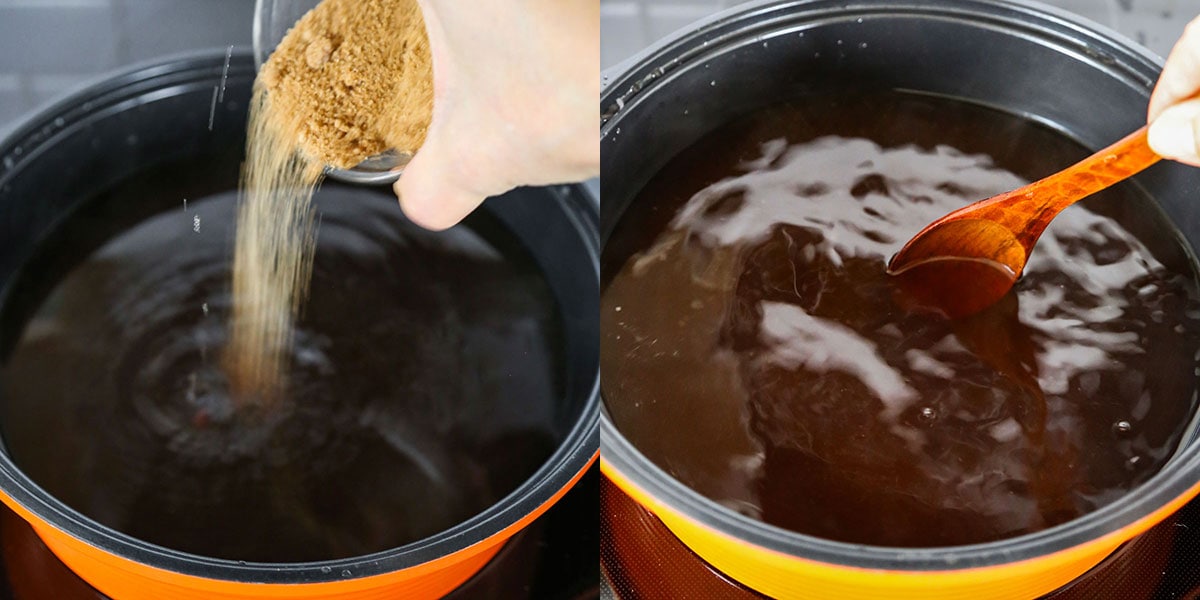I make a big pitcher of Korean cinnamon ginger tea and keep it in the fridge as an all purpose elixir. It’s perfectly sweet with a subtle gingery burn. Hits the spot over ice on a summer day – or served piping hot after a big meal. Bonus: both ginger and cinnamon can help settle an upset tummy. So I keep plenty of this Korean punch on call.

My mom is mildly addicted to streaming Korean dramas. Years ago, I was at her place for a visit and she asked me if I’d ever tried Sujeonggwa. The characters on one of her favorite shows were drinking a gingery cinnamon punch during a holiday episode – and she wanted to try it. So obviously we went to the kitchen. It took us just 5 minutes of prep to peel and slice fresh ginger and gather together a couple cinnamon sticks and brown sugar. As the ginger tea simmered, I whipped up Korean banana milk for us – and my mom made me promise to make Hwachae punch the next day.
We finally strained the cinnamon sticks and ginger out of the tea – added a bit of sugar and tried sujeonggwa for the first time. I loved the slow burn of the ginger – and the mild sweetness. It was my mom that suggested putting it in the fridge and drinking it ice cold. So refreshing! All these years later, I keep a full pitcher of Korean ginger tea in the fridge at all times. My mom does too.
Table of Contents
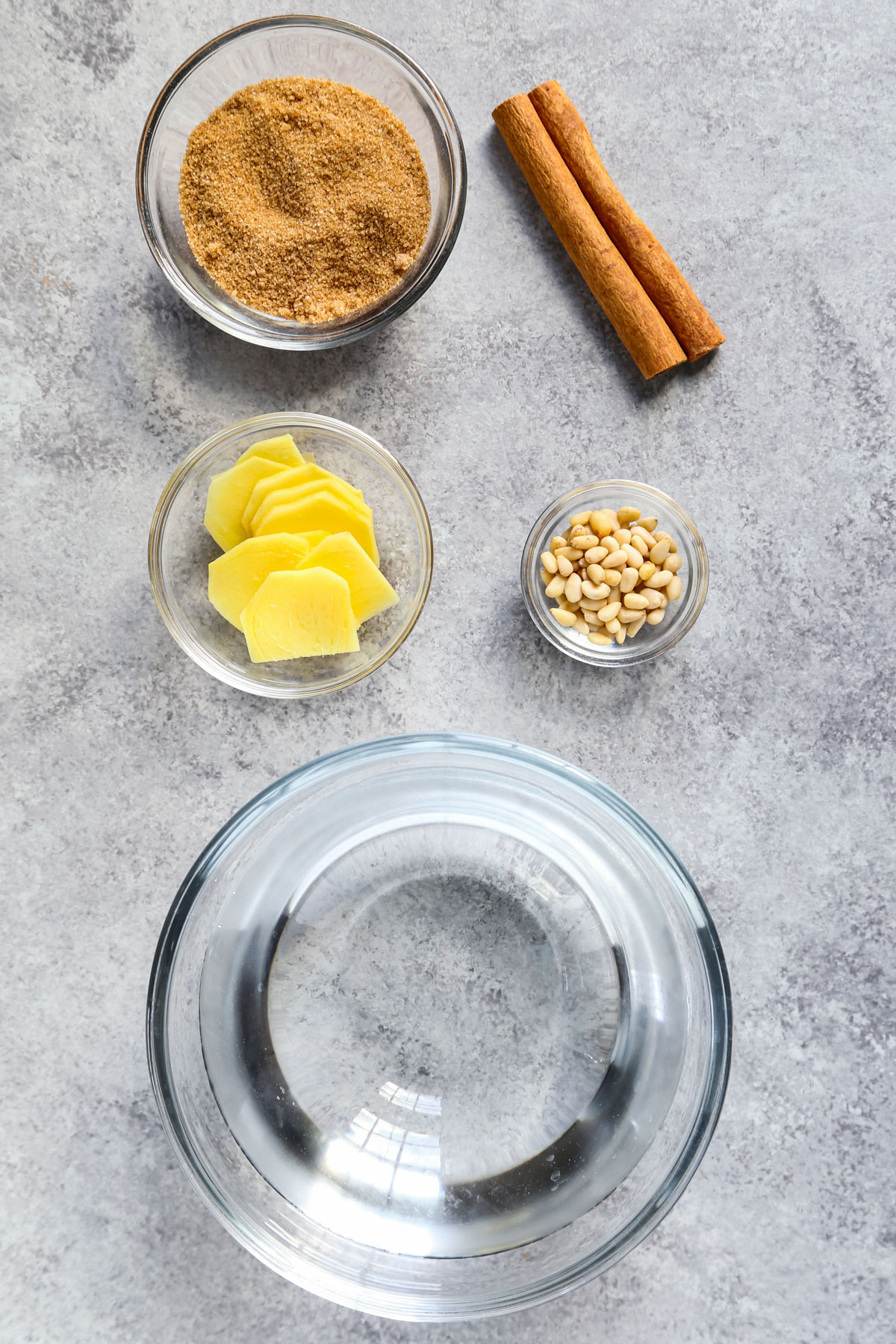
Ingredients
Scroll to the bottom of this page for the full recipe steps and measurements.
- Cinnamon Sticks: I use whole cinnamon sticks. If they come out of the jar particularly ‘dusty’ with loose cinnamon, I’ll give them a quick rinse.
- Fresh Ginger: Peeled and sliced. I use a piece about the size of my thumb or a little bigger. The fresher and juicier the ginger, the better.
- Water
- Brown Sugar: I use about 1/2 cup of brown sugar. It’s a sweet drink, but not cloying. Feel free to add more or less (add slowly, taste as you go).
- Pine Nuts or Dried Jujubes: These are garnishes and completely optional. But I use pine nuts for their rich, buttery flavor. And dried jujubes are chewy, with a flavor that’s akin to apples and dates.
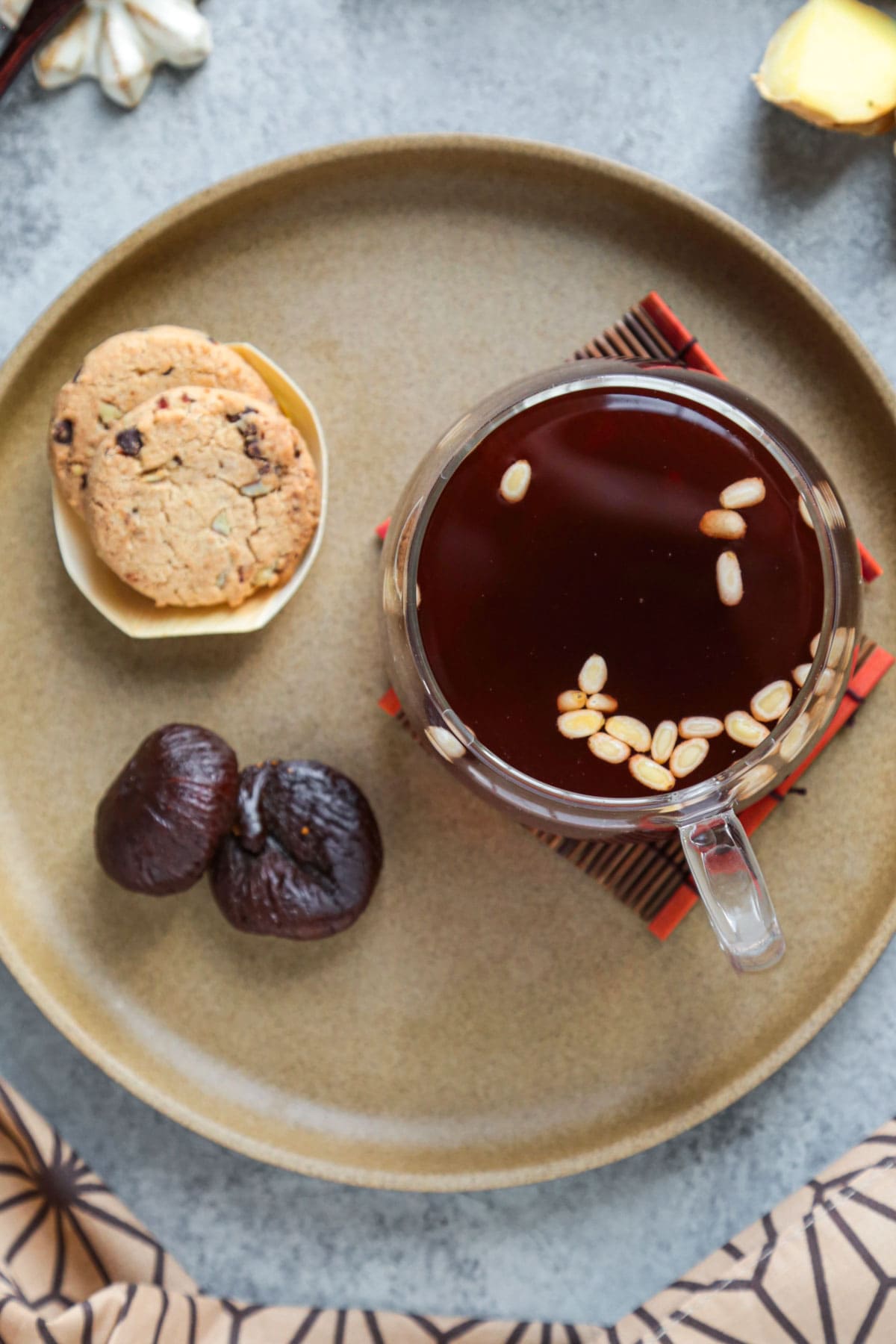
How to Make Korean Ginger Tea
- Boil and simmer. Bring the water, cinnamon sticks and ginger to a boil – then lower the heat to a simmer and cover for 45 minutes.
- Strain. Remove and discard the cinnamon sticks and ginger.
- Sweeten and serve. Add the sugar to the strained tea. Stir well until sugar completely dissolves. Serve hot immediately – or refrigerate and serve cold.
Expert Tip
This Korean ginger tea has a perfectly balanced flavor as is. However, sometimes I like to take it from mildly zingy to full on spicy. And I don’t need to buy extra ingredients to achieve that.
For a spicier ginger tea, I just double up on the fresh ginger.
Storage and Reheating
Store the tea in a covered jar or pitcher in the refrigerator for up 7 days. Enjoy ice cold – or hot.
- If serving hot, reheat leftover tea in the microwave – or in a small pot on the stovetop.
Sujeonggwa can also be frozen for up to 2 months. Thaw overnight in the fridge and serve within a week.
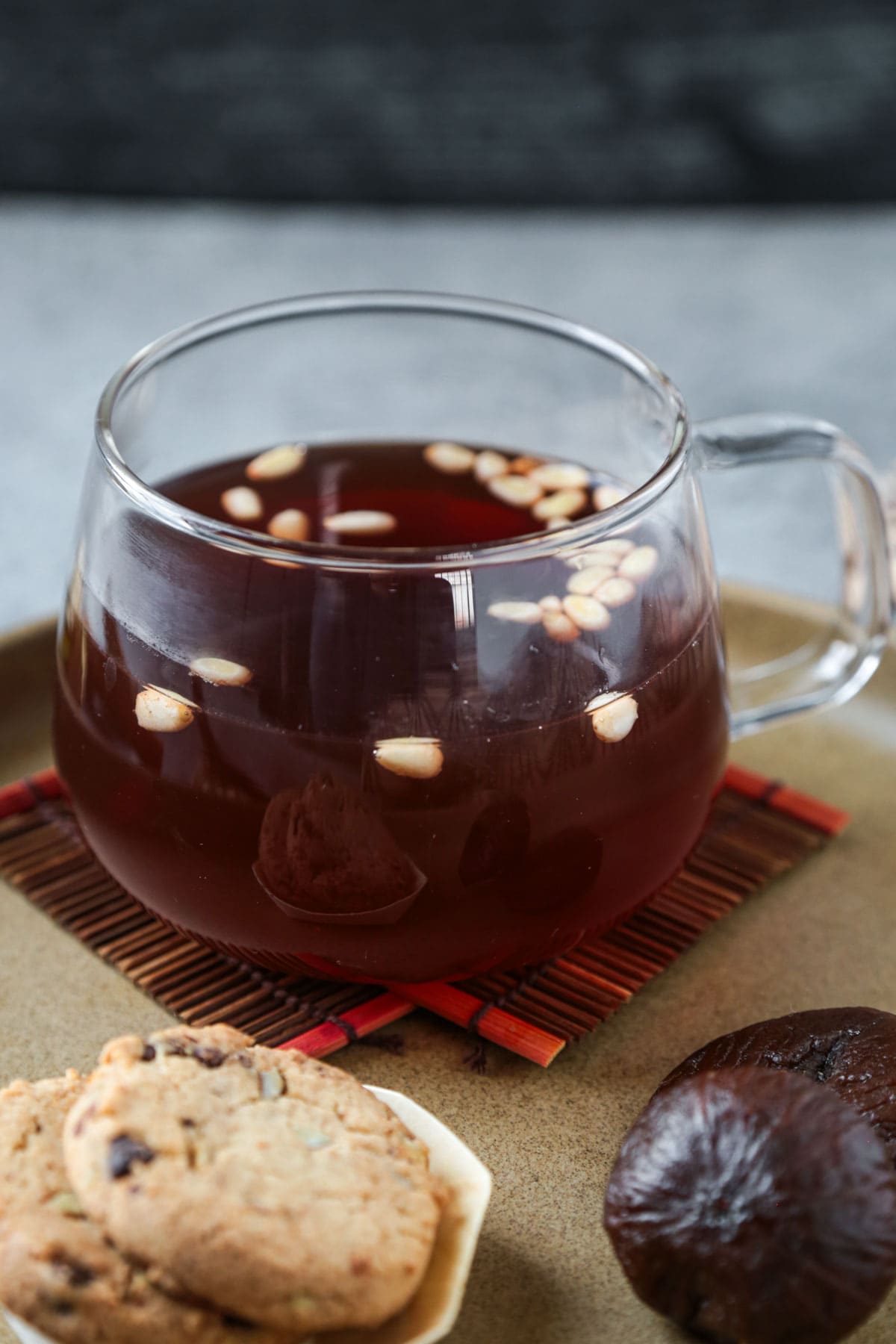
What to Serve With Ginger Cinnamon Punch
I love drinking this sweet tea at the end of a meal alongside hotteok pancakes. But since cinnamon and ginger aid with digestion, I also frequently have a cup or two after indulging in a big serving of vegan bulgogi or a plate fiery rabokki. Here are a few more of my Korean favorites:
- Kimchi Jjigae (Kimchi Stew)
- Skillet Dolsot Bibimbap
- Japchae – Korean Glass Noodles
- Steamed Korean Eggplant (Gaji Namul)
- Tteokbokki (Spicy Korean Rice Cakes)
Other delicious teas: ginger vinegar iced tea, Thai iced tea, royal milk tea, lemongrass iced tea, boba tea, matcha latte, how to cold brew tea
Frequently Asked Questions
Nope. These garnishes are completely optional. In fact, I drink this ginger tea without the traditional garnishes more often than I add them. Basically I use them when I feel like going the extra mile – but I never let not having them in the pantry stop me from making this awesome Korean punch.
It’s really dealer’s choice. I keep a pitcher in the fridge during the summer months and drink it cold throughout the day – much like summery mugicha (Japanese barley tea). But at the end of a meal, and throughout the winter, I prefer it hot. So there’s no wrong answer. I will say that the refreshing aspect of this ginger tea shines more when it’s cold. And I get more comforting properties when it’s served warm.
Did you try this recipe? Are there changes you made that you would like to share? Share your tips and recommendations in the comments section below!
Print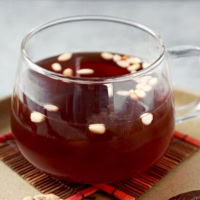
Cinnamon Ginger Tea (Sujeonggwa)
- Prep Time: 5 minutes
- Cook Time: 45 minutes
- Total Time: 50 minutes
- Yield: About 6 cups 1x
- Category: Drinks
- Method: Boiling
- Cuisine: Korean
- Diet: Low Calorie
Description
After my first sip of this sweet traditional Korean cinnamon punch, I knew I’d be making it all the time. It’s so easy! Just 5 minutes of prep, and the rest is passive brew time.
Ingredients
- 2 cinnamon sticks
- 1 thumb size ginger, peeled and thinly sliced
- 7 cups water
- 1/2 cup brown sugar
- Pine nuts or dried jujubes (optional)
Instructions
1. Boil, then simmer. In a large pot, add the cinnamon sticks, ginger, and water, and bring to a boil. Lower the heat to a simmer, cover with a lid, and cook for 45 minutes.
2. Strain the tea. Place another large pot next to the boiling pot and drain the water, cinnamon sticks, and ginger through a strainer. Discard the cinnamon sticks and ginger.
3. Sweeten and serve. Add the sugar to the tea and stir until it has dissolved. Serve the tea warm or cold. Garnish with pine nuts or jujubes (optional).
Notes
Keep the tea in a jar or pitcher and refrigerate for up 1 week. Serve hot or cold.
Nutrition
- Serving Size: 1 cup
- Calories: 65
- Sugar: 16.2g
- Sodium: 16mg
- Fat: 0g
- Saturated Fat: 0g
- Unsaturated Fat: 0g
- Trans Fat: 0g
- Carbohydrates: 16.7g
- Fiber: 0g
- Protein: 0.1g
- Cholesterol: 0mg
